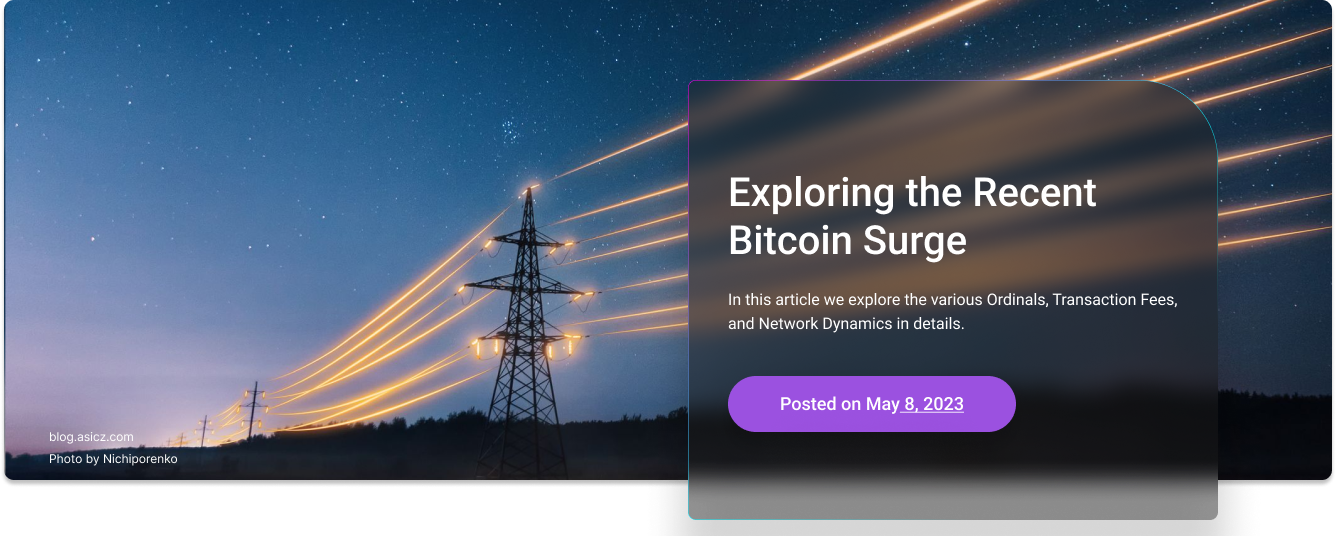Introduction:
Bitcoin has recently experienced a surge in activity, leading to various developments and concerns within the crypto community. In this article, we delve into the details of this sudden spike, including the emergence of Ordinals, the impact on transaction fees, and the overall dynamics of the Bitcoin network.
The Rise of Ordinals:
One intriguing aspect of the recent Bitcoin activity is the emergence of Ordinals, a protocol designed to add an element of fun to the Bitcoin ecosystem. Ordinals allow for text, images, and code to be inscribed on individual satoshis, the smallest units of Bitcoin. Each satoshi is assigned a unique number based on the order in which it is mined, creating non-fungible characteristics similar to NFTs. To date, more than 3.7 million inscriptions have been made using the Ordinals protocol.
Bug Discovery and Controversy:
During exploration of Ordinals, a pseudonymous Bitcoin and Lightning Network developer known as “Supernestnet” discovered a bug related to the inscription numbers. By inscribing a satoshi they didn’t own, Supernestnet inadvertently disrupted the numbering system and raised questions about the integrity of Ordinals. However, industry experts quickly clarified that the inscription numbers are primarily vanity metrics, representing the order of inscriptions rather than holding significant value. They emphasized that this incident merely highlighted a known issue without undermining the functionality of Ordinals.
Transaction Fee Increase and Network Dynamics:
Concurrently, the recent surge in Bitcoin activity has led to a notable increase in transaction fees. According to Galaxy Research, mean-average transaction fees have risen by nearly 300% in the past two weeks. Presently, users can expect to pay between $5 and $6 to have a transaction processed through the Bitcoin mempool. Ordinals, as originally intended, contribute to the development of a robust fee market within the Bitcoin ecosystem.
It is worth noting that the recent spike in transaction fees is likely driven not only by Ordinals but also by the “DeFi on Bitcoin” efforts surrounding the BRC-20 token standard. While sharing similarities with Ordinals, the BRC-20 token standard serves a different purpose. These developments are noteworthy for Bitcoin’s growth, indicating increasing experimentation and diversification within the ecosystem.
The Resilience of Bitcoin:
Despite the bug discovery and the subsequent discussions around Ordinals, Bitcoin continues to operate with slightly higher transaction fees, reflecting the growing demand and interest in the cryptocurrency. The incident serves as a reminder that Bitcoin’s underlying technology remains resilient and capable of addressing challenges as they arise. Moreover, it highlights the ongoing evolution and exploration taking place within the crypto space.
The recent surge in Bitcoin activity, coupled with the emergence of Ordinals and the increase in transaction fees, has captured the attention of the crypto community. While the bug discovery in Ordinals may have sparked temporary controversy, it ultimately underscores the experimental nature of the ecosystem. Bitcoin continues to thrive, adapting to changing circumstances and attracting a diverse range of participants. As the crypto landscape evolves, it is crucial to recognize that incidents like these contribute to the growth and maturation of the industry.
If you would like to learn more about how to participate in the Bitcoin network and explore the exciting developments in the world of crypto, consider checking out AsicZ. AsicZ is a leading provider of Bitcoin mining hardware, hosting and technology solutions, offering cutting-edge ASIC miners and comprehensive mining services. Whether you’re a beginner looking to start your Bitcoin mining journey or an experienced miner seeking to upgrade your equipment, AsicZ can provide you with the expertise and resources you need.

